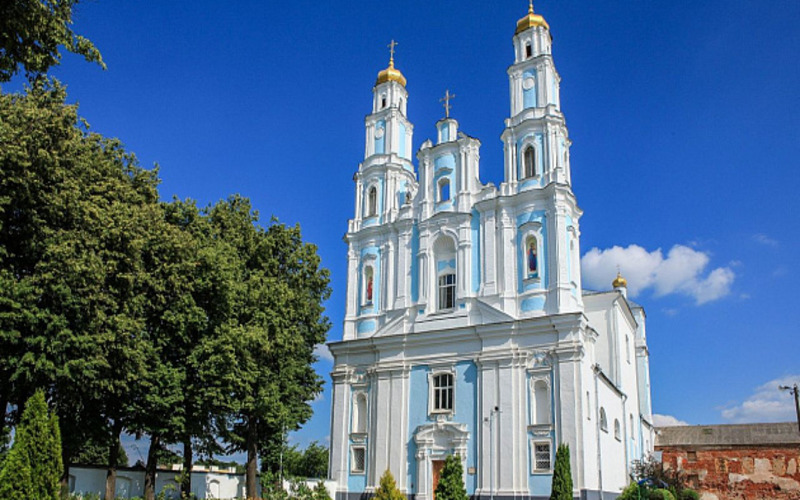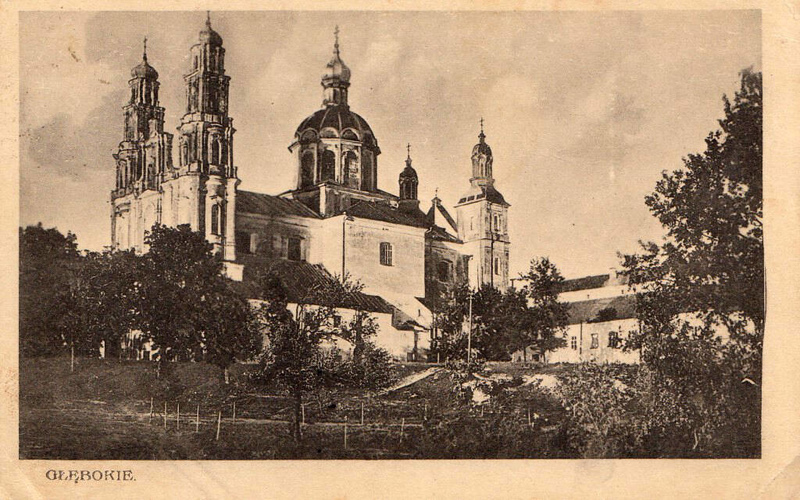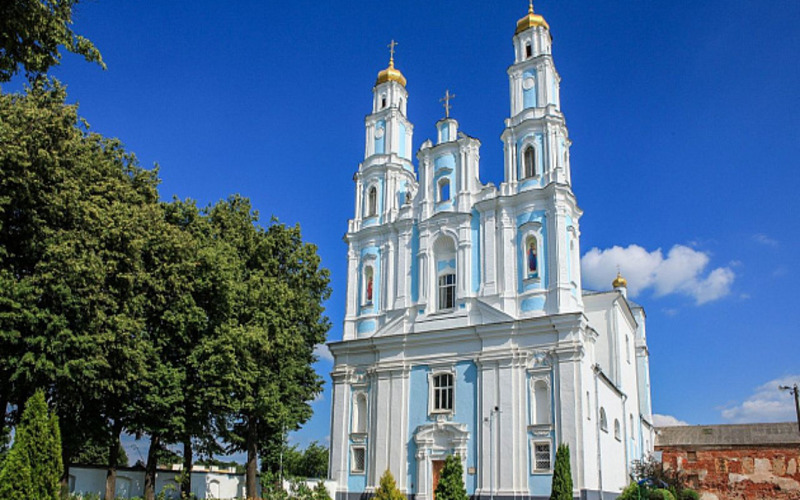- Vitebsk region, Glubokoe District, Hlybokaye, 3, 17 Sentyabrya Square
About the Cathedral
The Cathedral of the Nativity of the Virgin in Glubokoye was erected between 1639 and 1654, funded by the voivode of Mstsislaw, Jozef Korsak. Initially, it was part of a Carmelite male monastery. The cathedral, rising in the style of Vilnian Baroque, impressed with its grandeur, even drawing the attention of Napoleon Bonaparte, who was in Hlybokaye during the military actions of 1812. According to legend, Napoleon, who stayed in the monastery for 10 days during his campaign to Moscow, remarked, "I regret that I cannot take it with me to Paris; the Notre Dame would not be ashamed to have it as a neighbour".
 Cathedral of the Nativity of the Blessed Virgin Mary Today
Cathedral of the Nativity of the Blessed Virgin Mary TodayIn the 19th century, the Carmelite monastery was dissolved due to the monks' involvement in rebellions, and after 1863, its church was rebuilt and consecrated as an Orthodox cathedral in 1878. In the early 20th century, a wooden dome in the Byzantine style was added to the cathedral, which unfortunately burned down during the Great Patriotic War (the Eastern from of World War II) in 1944.
 Cathedral of the Nativity of the Blessed Virgin Mary (Circulation postcard, 1916)
Cathedral of the Nativity of the Blessed Virgin Mary (Circulation postcard, 1916)The main sacred image of the cathedral is the icon of the Mother of God "Axion Estin" (or It is Truly Meet), brought to the city in 1911 from Mount Athos.

Today, the Cathedral of the Nativity of the Virgin in Hlybokaye serves as the center for many spiritual and educational initiatives, including a church library, Sunday school, and professional choir.